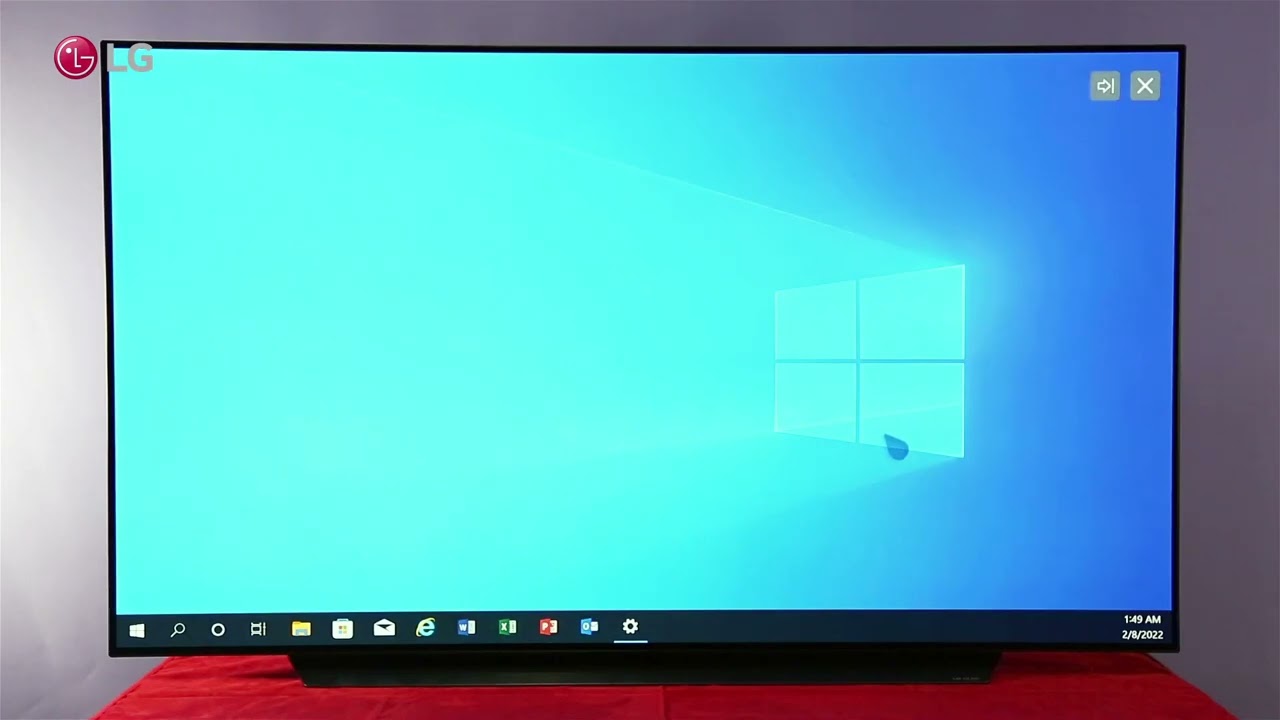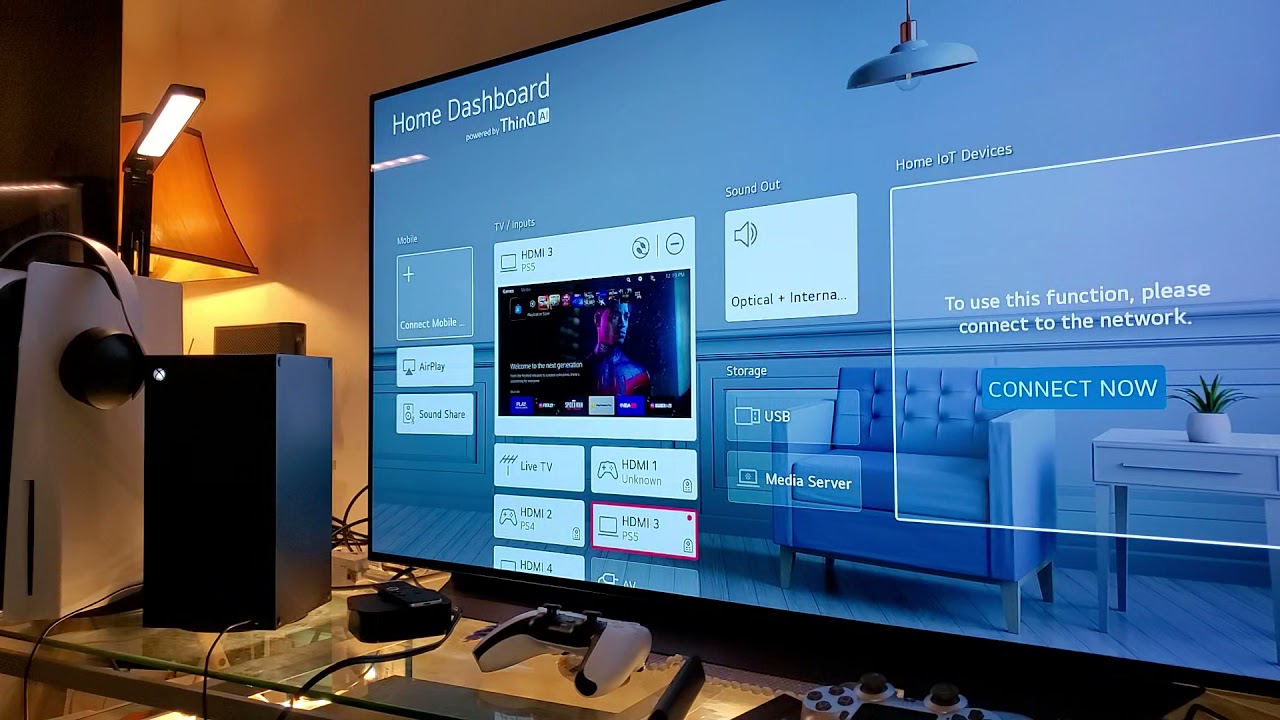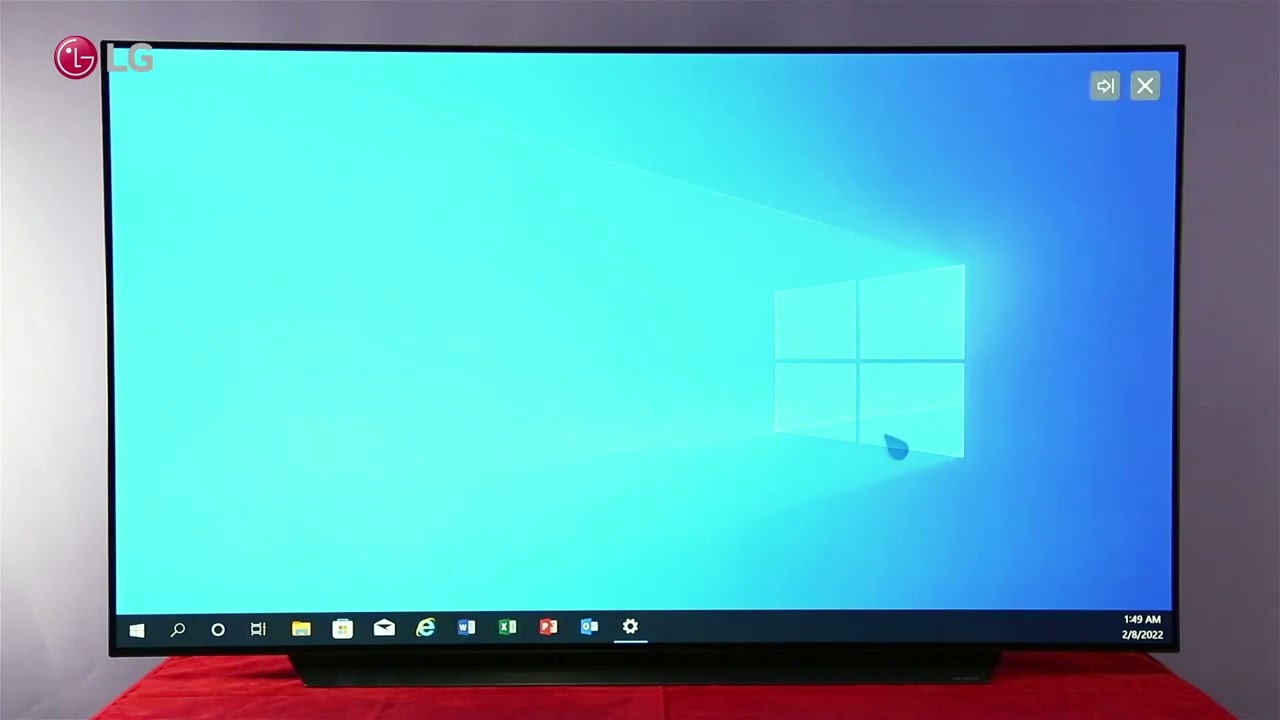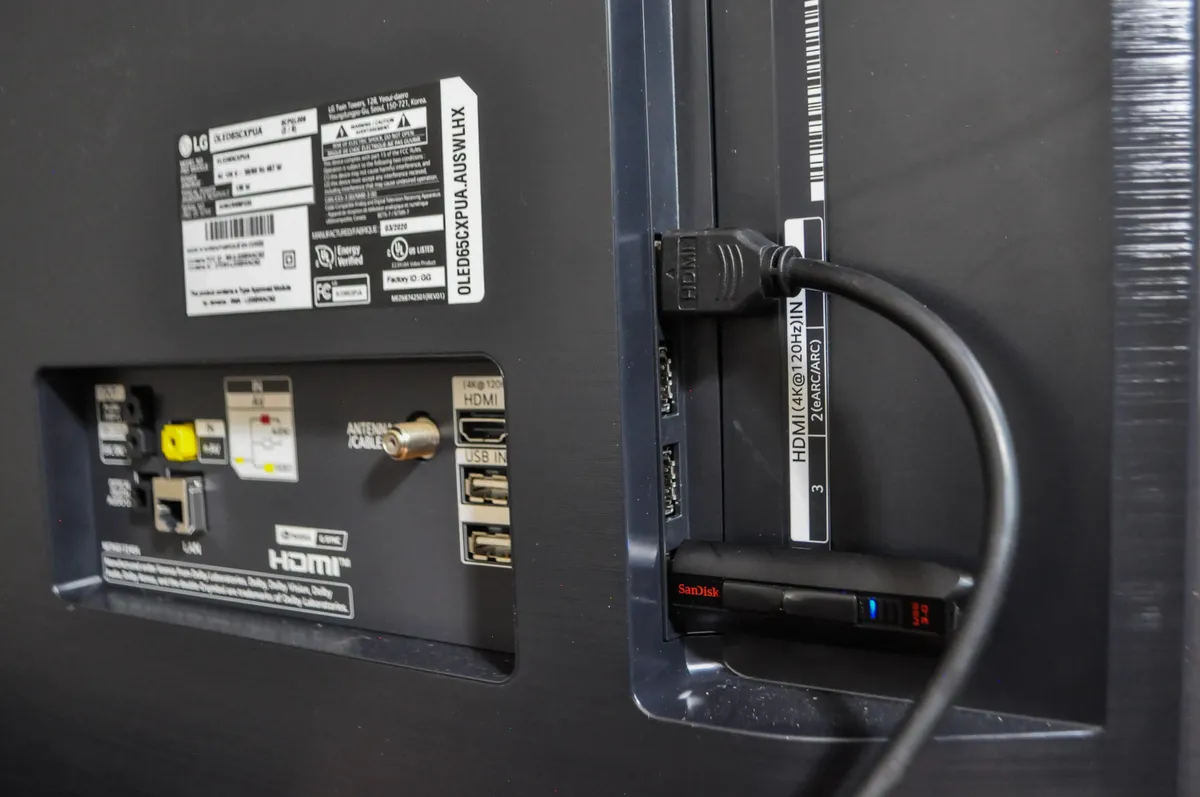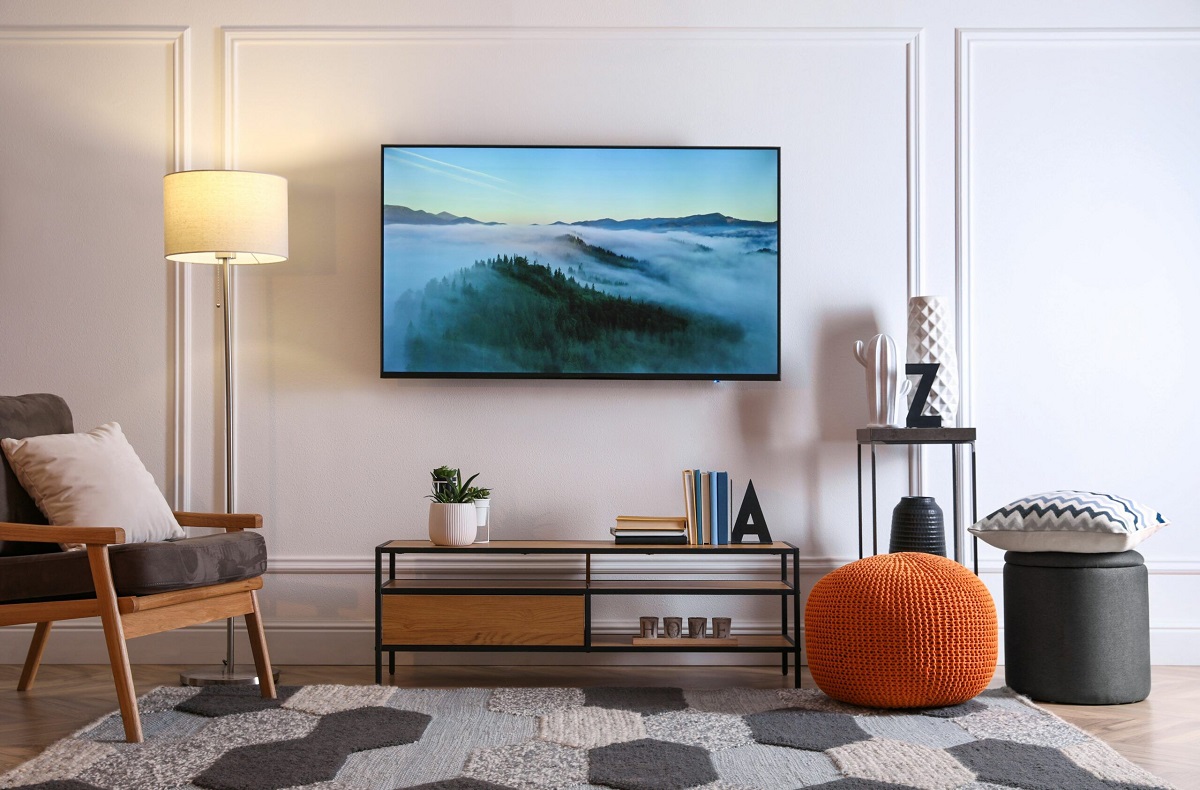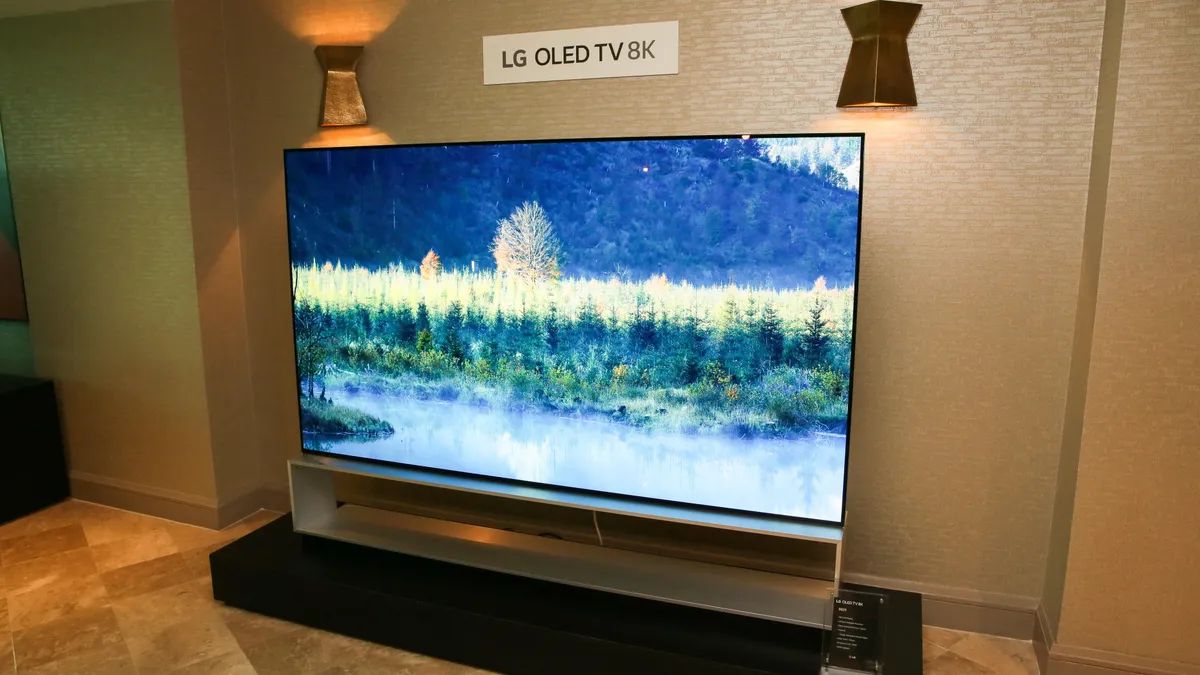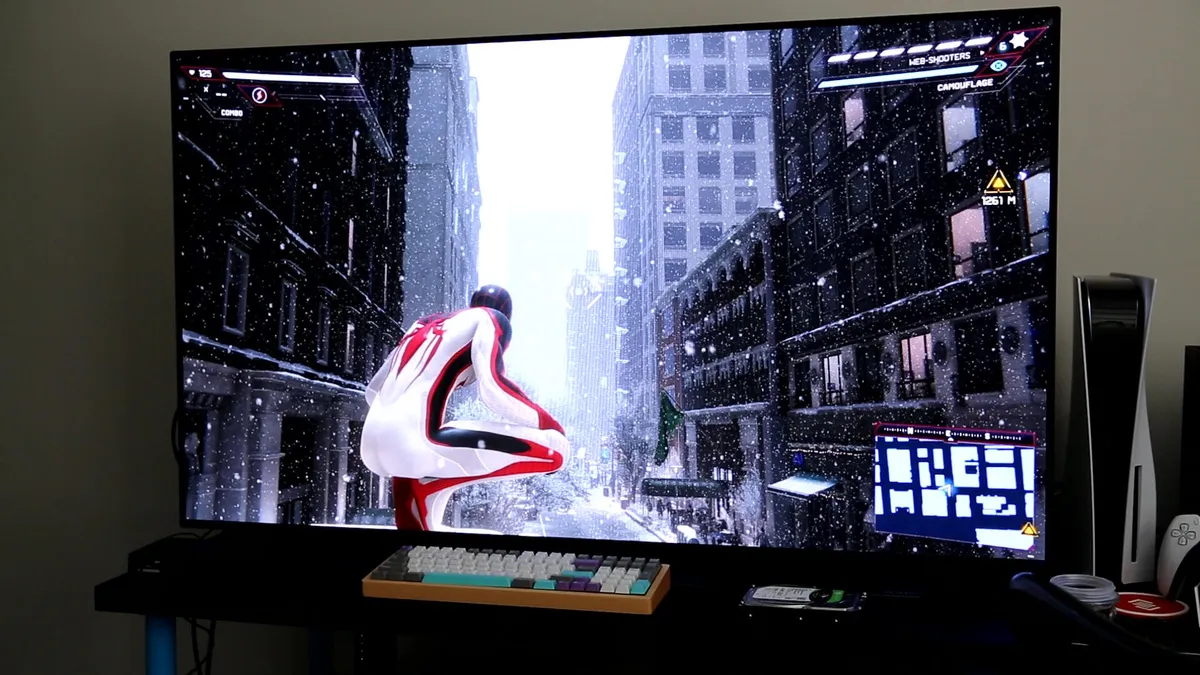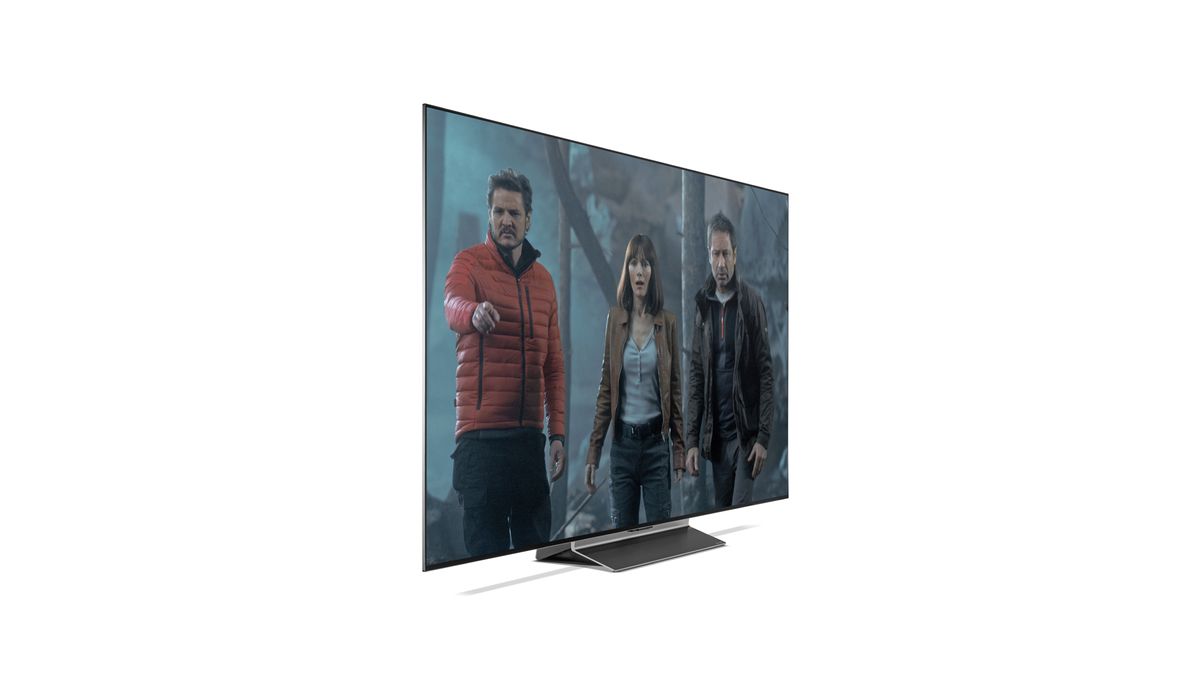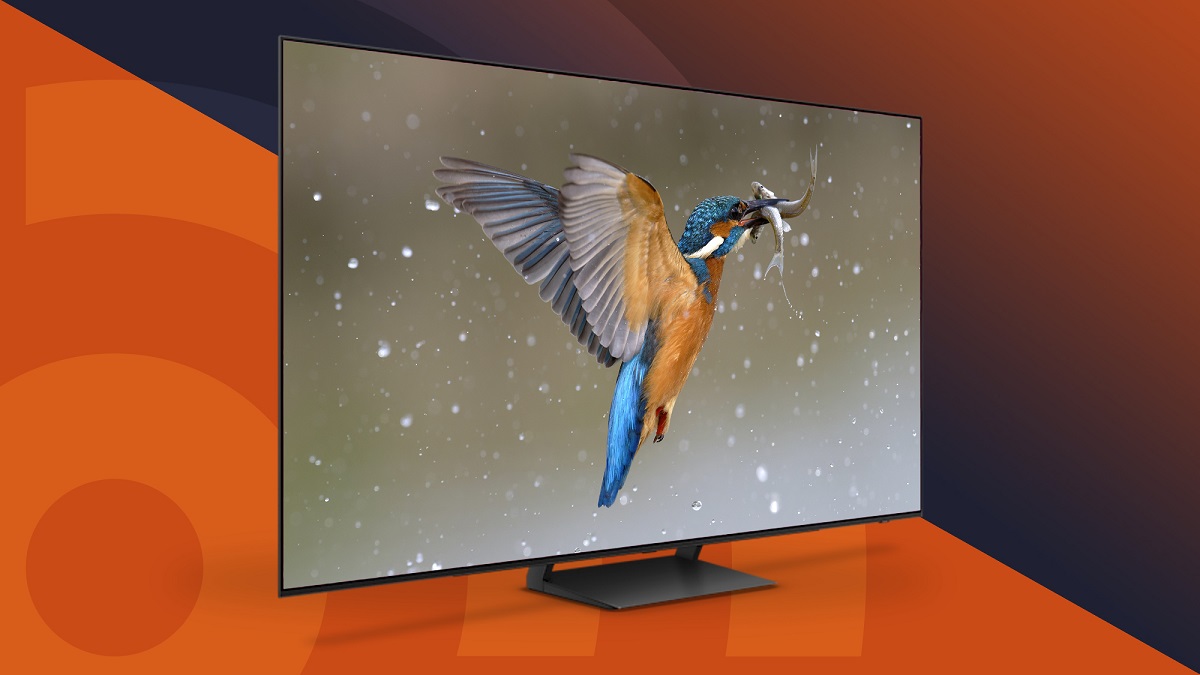Introduction
Connecting your PC to an LG OLED TV opens up a world of possibilities, allowing you to enjoy multimedia content, work on a larger screen, or play games with stunning visuals. Whether you want to watch movies, stream videos, or showcase your presentations, connecting your PC to an LG OLED TV is a straightforward process that can be done in just a few simple steps.
Before you dive into the process, it’s essential to check the compatibility between your PC and the LG OLED TV. This involves verifying the available ports on both devices, as well as the necessary cables required for a successful connection.
In this guide, we will walk you through the process of connecting your PC to an LG OLED TV, step by step. From checking compatibility to troubleshooting common issues, we will cover everything you need to know to ensure a seamless connection and an immersive viewing experience.
So, let’s get started and learn how to connect your PC to an LG OLED TV for an enhanced multimedia experience!
Step 1: Check the PC’s compatibility with LG OLED TV
Before connecting your PC to an LG OLED TV, it’s crucial to ensure compatibility between the two devices. Here are a few key factors to consider:
- Ports: Check the available ports on both your PC and LG OLED TV. The most common port used for connecting PCs and TVs is the High-Definition Multimedia Interface (HDMI) port. Ensure that your PC has an HDMI output port, and your LG OLED TV has an HDMI input port. If your PC or TV doesn’t have HDMI ports, check for alternative connections such as DisplayPort or VGA.
- Resolution: Verify the maximum resolution supported by your PC and LG OLED TV. Higher resolutions like Full HD (1080p) or Ultra HD (4K) offer a more immersive visual experience. Make sure your PC can output the desired resolution, and your TV supports it.
- Cable: Check if you have the necessary cable to connect your PC to the LG OLED TV. If your PC has an HDMI output port, you’ll need an HDMI cable. Ensure the cable is in good condition and supports the required resolution and audio capabilities.
- Graphics Card: Your PC’s graphics card plays a crucial role in delivering high-quality visuals to the LG OLED TV. Ensure that your graphics card supports the desired resolution and has the necessary drivers installed. Updated drivers can enhance compatibility and performance.
By confirming the compatibility between your PC and LG OLED TV, you can avoid potential connectivity issues and ensure a seamless connection process. Once you’ve verified compatibility, you can proceed to the next step: determining the type of connection required for your setup.
Step 2: Determine the type of connection
Once you’ve verified the compatibility between your PC and LG OLED TV, the next step is to determine the type of connection that suits your setup. The most common and recommended method is using an HDMI cable. Here are a few scenarios to consider:
- PC with HDMI Output and LG OLED TV with HDMI Input: If both your PC and LG OLED TV have HDMI ports, connecting them with an HDMI cable is the simplest and most convenient option. HDMI cables transmit both audio and video signals, ensuring a high-quality multimedia experience.
- PC without HDMI Output: If your PC lacks an HDMI output but has other types of video output ports, such as DisplayPort or VGA, you can use an appropriate adapter or converter to connect it to the LG OLED TV. For example, if your PC has a DisplayPort output and your TV has an HDMI input, you’ll need a DisplayPort to HDMI adapter or cable.
- Multiple Displays: If you want to connect your PC to the LG OLED TV as an extended or duplicate display, you’ll need to configure the display settings on your PC accordingly. Most operating systems, such as Windows or macOS, offer built-in display settings where you can adjust the screen resolution, orientation, and other display preferences.
Take a moment to assess your PC and LG OLED TV’s available ports and determine the type of connection that best fits your needs. Make sure to gather the necessary cables or adapters before proceeding to the physical connection in the next step.
With the connection type in mind, you’re now ready to proceed with step 3: physically connecting your PC to the LG OLED TV using an HDMI cable or appropriate adapters.
Step 3: Connect the PC to LG OLED TV using HDMI
Connecting your PC to an LG OLED TV using an HDMI cable is a straightforward process. Follow these steps to establish a secure and reliable connection:
- Make sure both your PC and LG OLED TV are powered off.
- Locate the HDMI ports on both devices. On your PC, it is typically found on the back, side, or front panel. On the LG OLED TV, the HDMI ports are usually located on the back or side panel.
- Take the HDMI cable and insert one end into the HDMI output port on your PC. Ensure it is securely connected.
- Take the other end of the HDMI cable and insert it into the HDMI input port on your LG OLED TV. Again, make sure it is securely connected.
- Power on both your PC and LG OLED TV.
Once you’ve completed these steps, your PC and LG OLED TV should recognize the HDMI connection automatically. If not, you may need to use the remote control or the menu buttons on your LG OLED TV to select the appropriate HDMI input source.
It’s important to note that HDMI cables can support both audio and video signals, so you should hear the audio through the LG OLED TV’s speakers once the connection is established. However, if you prefer to use external speakers or headphones, you may need to adjust the audio output settings on your PC accordingly.
With the physical connection established, you can move on to step 4: adjusting the display settings on your PC to optimize the visual output on the LG OLED TV.
Step 4: Adjust the display settings on the PC
Now that you have successfully connected your PC to the LG OLED TV using an HDMI cable, it’s time to fine-tune the display settings on your PC to ensure the optimal viewing experience. Here are the steps to adjust the display settings:
- On your PC, right-click on an empty area of the desktop and select “Display settings” or “Screen resolution.” This will open the display settings menu.
- In the display settings menu, you should see two displays labeled as “1” and “2.” The LG OLED TV will be recognized as a secondary display. Click on the LG OLED TV display to select it.
- Adjust the resolution: Choose the recommended resolution for your LG OLED TV or select the desired resolution that matches its capabilities. Higher resolutions, such as Full HD or 4K, will offer a more immersive viewing experience.
- Set the screen orientation: Choose whether you want to extend the display, duplicate the screen, or use only the LG OLED TV as the primary display. This depends on your preferences and how you plan to use both the PC monitor and the LG OLED TV.
- Make additional adjustments: Depending on your graphics card and operating system, you may have additional display settings available, such as color calibration, refresh rate, or scaling options. Explore these settings to further optimize the visual output on your LG OLED TV.
- Click “Apply” or “OK” to save the changes. Your PC will adjust the display settings, and you should now see your desktop or content being mirrored on the LG OLED TV.
With the display settings adjusted, you’re now ready to enjoy your favorite movies, videos, or presentations on the larger screen of the LG OLED TV with enhanced clarity and visuals.
In case you encounter any issues or the display settings need further fine-tuning, refer to step 5 for troubleshooting common problems and finding solutions.
Step 5: Troubleshooting common issues
While connecting your PC to an LG OLED TV is generally a straightforward process, you may encounter some common issues along the way. Here are a few troubleshooting steps to help you resolve them:
- No signal: If you’re not seeing a signal on your LG OLED TV after connecting the HDMI cable, make sure that both your PC and TV are powered on. Double-check the HDMI connections to ensure they are secure. Try using a different HDMI port on your TV or a different HDMI cable to rule out any potential issues with the ports or cable.
- Poor image quality: If the image quality on your LG OLED TV appears blurry or distorted, first check if you have set the correct resolution in the display settings on your PC. Adjust the resolution to match the capabilities of your TV. Additionally, ensure that your graphics card drivers are up to date, as outdated drivers can affect image quality.
- No audio: If you’re not hearing any sound through the LG OLED TV’s speakers, make sure the audio output is set correctly on your PC. Right-click on the volume icon in the system tray and select “Playback devices” (Windows) or “Sound” settings (macOS) to ensure the LG OLED TV is selected as the default audio output device.
- Display not detected: If your PC does not detect the LG OLED TV as a secondary display, try the following steps: check the HDMI cable for any visible damage, restart both your PC and TV, update your graphics card drivers, and make sure you have selected the correct HDMI input on your TV.
- Black bars or overscan: In some cases, you may notice black bars around the edges of the screen or overscan, where the display extends beyond the visible area. To fix this, look for overscan or scaling options in your graphics card control panel or display settings on your PC. Adjust these settings to ensure the entire screen is utilized without any black bars.
If you’re still experiencing issues after trying these troubleshooting steps, consult the user manual of your PC and LG OLED TV or reach out to their respective support channels for further assistance. They will be able to provide specific guidance based on your devices and settings.
With these troubleshooting tips in mind, you’re now equipped to overcome common issues and enjoy a seamless connection between your PC and LG OLED TV.
Conclusion
Connecting your PC to an LG OLED TV opens up a world of possibilities, allowing you to enjoy a larger screen and stunning visuals for your multimedia content. By following the steps outlined in this guide, you can easily establish a connection between your PC and LG OLED TV, enhancing your viewing experience and productivity.
Starting with checking compatibility between your devices, ensuring you have the right ports and cables, and determining the type of connection, you can confidently proceed to physically connecting your PC to the LG OLED TV using an HDMI cable. Adjusting the display settings on your PC will optimize the visual output for an immersive experience.
Should you encounter any common issues like no signal, poor image quality, no audio, or display not being detected, refer to the troubleshooting steps provided to resolve them. Checking HDMI connections, updating drivers, and adjusting settings will help ensure a seamless connection.
Remember to refer to your PC and LG OLED TV user manuals or contact their respective support channels for further assistance if needed. They can provide specific guidance tailored to your devices and settings.
Now that you have successfully connected your PC to the LG OLED TV, it’s time to sit back, relax, and enjoy your favorite movies, shows, videos, or presentations on the big screen with exceptional picture quality.
So, go ahead and experience the visual wonders that await you with your PC connected to an LG OLED TV!







